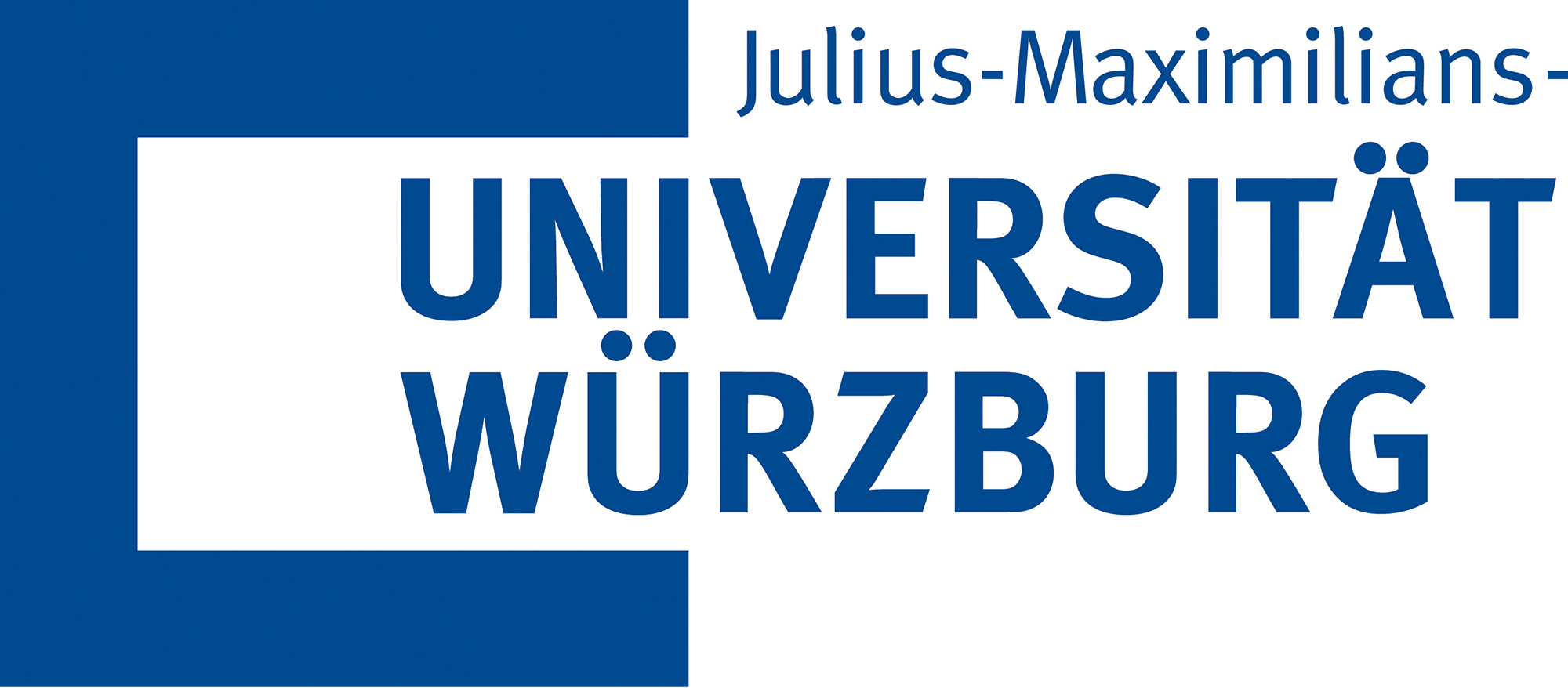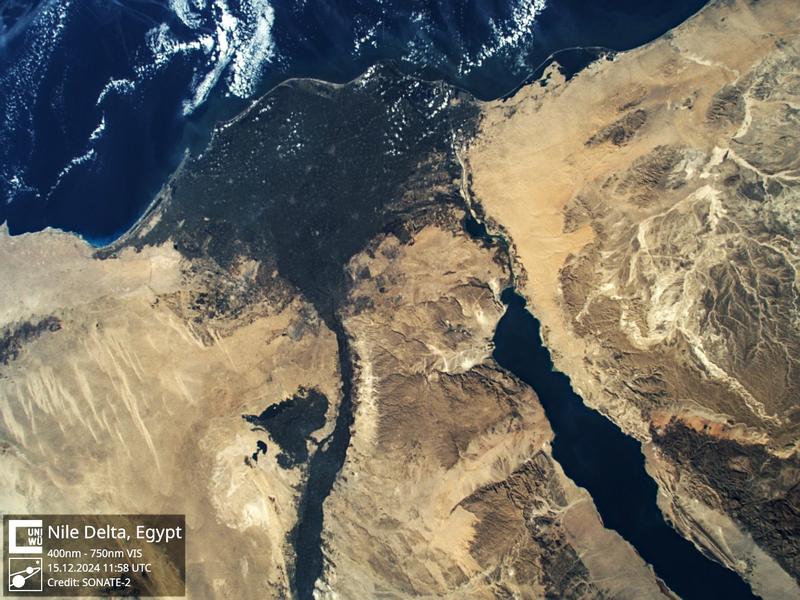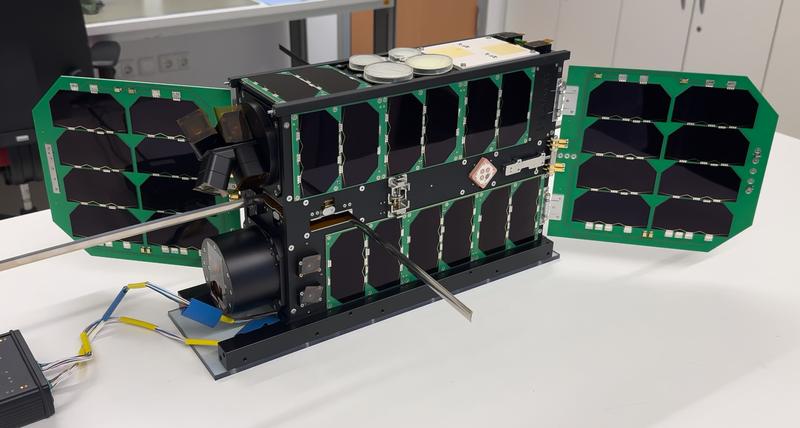The Würzburg University satellite SONATE-2 has autonomously recognized the Nile and its estuary delta as anomalies in the Sahara. SONATE-2, University of Wuerzburg
On March 4, 2024, SONATE-2, a small satellite from Julius-Maximilians-Universität Würzburg (JMU), was launched into space on a rocket. The team led by Hakan Kayal, head of the Professorship for Space Technology, spent three years developing and building the satellite, which is about the size of a shoebox. Shortly after the satellite was launched over Madagascar, the first contact was made at the mission control center on the Hubland campus.
One aim of the Würzburg space mission was to demonstrate that it is possible to train an AI autonomously on board the satellite. SONATE-2 was to learn to independently recognize and photograph anomalies on the Earth's surface – an important step towards increased autonomy for small satellites.
Successful Training of Neural Networks in Orbit
After a year in space, the project funded by the Federal Ministry for Economic Affairs and Climate Action has now officially come to an end. “All mission objectives were achieved,” says project manager Dr. Oleksii Balagurin. Among other things, the JMU team demonstrated that the independent training of neural networks in orbit works on the small satellite.
The Sahara was selected as the target region for detecting anomalies. The satellite first took 270 photos and stored them in two data sets of 90 and 180 images. Two AI models were then trained and anomaly detection was carried out with each. SONATE-2 reliably recognized objects that do not normally occur in a desert, such as the Nile and the adjacent green region.
“In the future, these methods can be used to autonomously detect interesting features during interplanetary missions, for example on unknown planets or celestial bodies,” says Professor Kayal.
Satellite is Still Fully Functional
In addition to the primary AI payload, there are three other payloads on SONATE-2 that have also been successfully tested: the MultiView multi-head miniature star sensor, a pulsed plasma thruster and an amateur radio payload that offers two amateur radio services to radio amateurs worldwide.
SONATE-2 is still fully functional. Hakan Kayal's team continues to operate the small satellite on a reduced scale. It is now available, for example, for the practical training of aerospace computer science students. The JMU team is supported by the Würzburg student association WüSpace.
With the help of software uploads, further experiments are theoretically possible on board. However, this will only be possible for a limited time: SONATE-2 naturally loses altitude as it orbits the Earth. “We estimate that our satellite will function for another year and a half and then burn up completely when it enters the Earth's atmosphere,” says Hakan Kayal.
Contact for scientific information:
Prof. Dr. Hakan Kayal, Professorship for Space Technology, Institute for Computer Science, University of Würzburg, T +49 931 31-86649, hakan.kayal@uni-wuerzburg.de
Original publication:
Results of the mission have been published e.g. by the German Society for Aeronautics and Astronautics: Balagurin, O.; Greiner, T.; et al. (2024): First flight results of the SONATE-2 satellite mission. German Aerospace Center - Lilienthal-Oberth e.V., November 2024, doi.org/10.25967/630218





